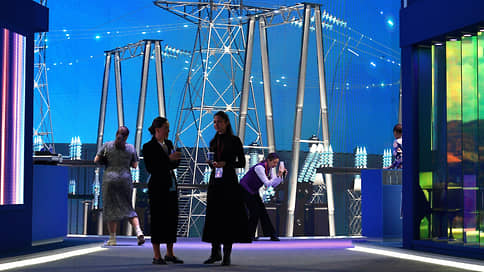The Ministry of Energy will allow the transfer of excess power grid capacity to other consumers
[ad_1]

As Kommersant found out, the Ministry of Energy may allow industry to share free power grid capacity with other consumers. The initiative will help solve the age-old problem of unpaid “network reserve”, the volume of which for large businesses can exceed 30 GW. The industry supports the initiative, and analysts propose allowing consumers not only to refuse capacity, but also to rent it out at night.
Industrial enterprises may be allowed to refuse excess power grid capacity and transfer it to other electricity consumers. The Ministry of Energy proposes to make such an amendment to the rules for technological connection (TP) to electric networks (the draft resolution was published on regulation.gov.ru on November 10). It follows from the document that any consumer will be able to reduce the volume of maximum power grid capacity “with the simultaneous redistribution of this volume in favor of other owners of power receiving devices.” To do this, it is enough for two consumers to enter into an agreement and notify the network company. Currently, only organizations that were connected to the network before 2009 can share power grid capacity. The Ministry of Energy and Rosseti did not comment.
The problem of a large volume of unused power grid reserves in the Russian Federation has been discussed for many years: the Ministry of Energy proposed forcing consumers to pay for the “grid reserve”, but the discussion of the initiative was slowed down, including due to comments from Rosseti. The real volume of the “network reserve” is difficult to estimate. According to Rosseti, in 2013–2022 the company connected more than 125 GW of power, but only 30% of this volume is used. At the same time, the facilities of large consumers account for about 65 GW of connected capacity, as follows from the presentation of Rosseti, demonstrated at the latest conference of the Market Council (energy market regulator). Over ten years, the installed capacity of Rosseti’s transformer substations in distribution networks increased by 31 GVA, and in main ones – by 37 GVA. The utilization of transformer capacity in the distribution complex in 2022 was 25.6%, and in the main networks – 35%. However, market participants have repeatedly pointed out the incorrectness of Rosseti’s calculations, arguing that network capacity utilization could be higher and reach 50%.
One of the reasons for the increase in reserves was the benefits for TP for citizens and legal entities with a capacity of up to 150 kW, introduced in 2009. Benefits for TP for individuals and legal entities have been canceled since 2022, and soon the fee for TP for industrial consumers with a capacity of over 150 kW will be increased. The lost income of Rosseti from technological connections for 2009–2022 is estimated at 230 billion rubles, of which 69 billion rubles. must be compensated through a transmission tariff over 35 years, the company said in a presentation.
“We support an initiative that can help optimize redundant technical connection schemes that have arisen, for example, due to a mismatch between the parameters of the network company’s equipment and consumer requests,” the Energy Consumers Community (which unites industrial electricity consumers) told Kommersant. They believe that the forced “reserves” are insufficient for a full-fledged secondary market for network capacity, but the ability to operate with them will help some consumers return frozen investments in them to circulation.
Director of the Center for Research in the Electric Power Industry of the National Research University Higher School of Economics Sergei Sasim calls the initiative of the Ministry of Energy logical and justified. In his opinion, the possibility of mutually beneficial sale of a network resource is the most effective incentive for reducing the excess volume of maximum power among individual consumers. Mr. Sasim believes that for a more complete implementation of the proposal, it is possible to allow the consumer not only to sell power, but also to “rent it out,” for example, at night to optimize the load on power grids. Such an initiative can be applied to the development of charging infrastructure for electric vehicles, he believes: for example, allowing charging stations for electric vehicles at night to use the idle power grid power of public transport (trolleybuses, trams, metro) or residential apartment buildings in residential areas.
[ad_2]
Source link





